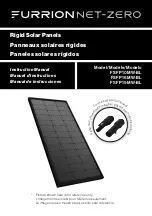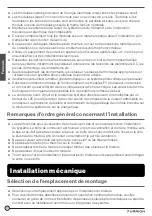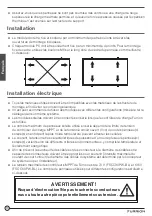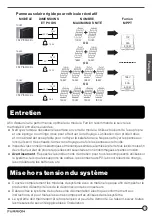
7
English
●
Keep children well away from the system while transporting and installing mechanical and
electrical components.
●
Completely cover all modules with an opaque material during installation to prevent
electricity from being generated.
●
Do not wear metallic rings, watches, or other metallic devices while installing or
troubleshooting photovoltaic systems.
●
Use appropriate safety equipment (insulated tools, insulating gloves, etc.) approved for use
on electrical installations.
●
Observe the instructions and safety precautions for all other components used in the system,
including wiring and cables, connectors, DC-breakers, mounting hardware, inverters, etc.
●
Use only equipment, connectors, wiring and mounting hardware suitable for use in a
photovoltaic system.
●
Always use the same type of module within a particular photovoltaic system.
●
Under normal operating conditions, PV modules will produce currents and voltages that are
different than those listed in the data sheet. Data sheet values are applicable at standard test
conditions only.
●
Short-circuit current and open-circuit voltages should be multiplied by a factor of 1.25 when
determining component voltage ratings, conductor ampacity, fuse sizes and size of controls
connected to the module or system output.
General Installation Notes
●
Drainage holes must not be covered with parts of the mounting system. The junction box has
a breather port which must be mounted facing downward and cannot be exposed to the rain.
The junction box should be on the higher side of the module when it is mounted in order to
orient the breather port correctly.
●
Do not lift the module by grasping the module's junction box or electrical leads.
●
Do not stand or step on the module.
●
Do not drop the module or allow objects to fall on the module.
●
Do not place any heavy objects on the module.
●
Inappropriate transport and installation may damage the module's glass or frame.
Mechanical Installation
Selecting the Mounting Location
●
Select a suitable location for the installation of the module.
●
For detailed information on optimal module orientation, refer to standard solar photovoltaic
installation guides or a reputable solar installer or systems integrator.
●
The module should be installed to reduce the amount of shading.
●
Modules should be mounted as far away from rooftop obstructions (AC units, plumbing
vents, skylights, etc.) as possible.
●
If solar panels must be installed near rooftop obstructions, try to orient the modules with
broadside facing the obstruction. This orientation will optimize the high by-pass diodes in
shaded conditions.
●
When possible, mount solar panels so that the majority of surfaces can be oriented south
facing if roof is positioned accordingly.









































